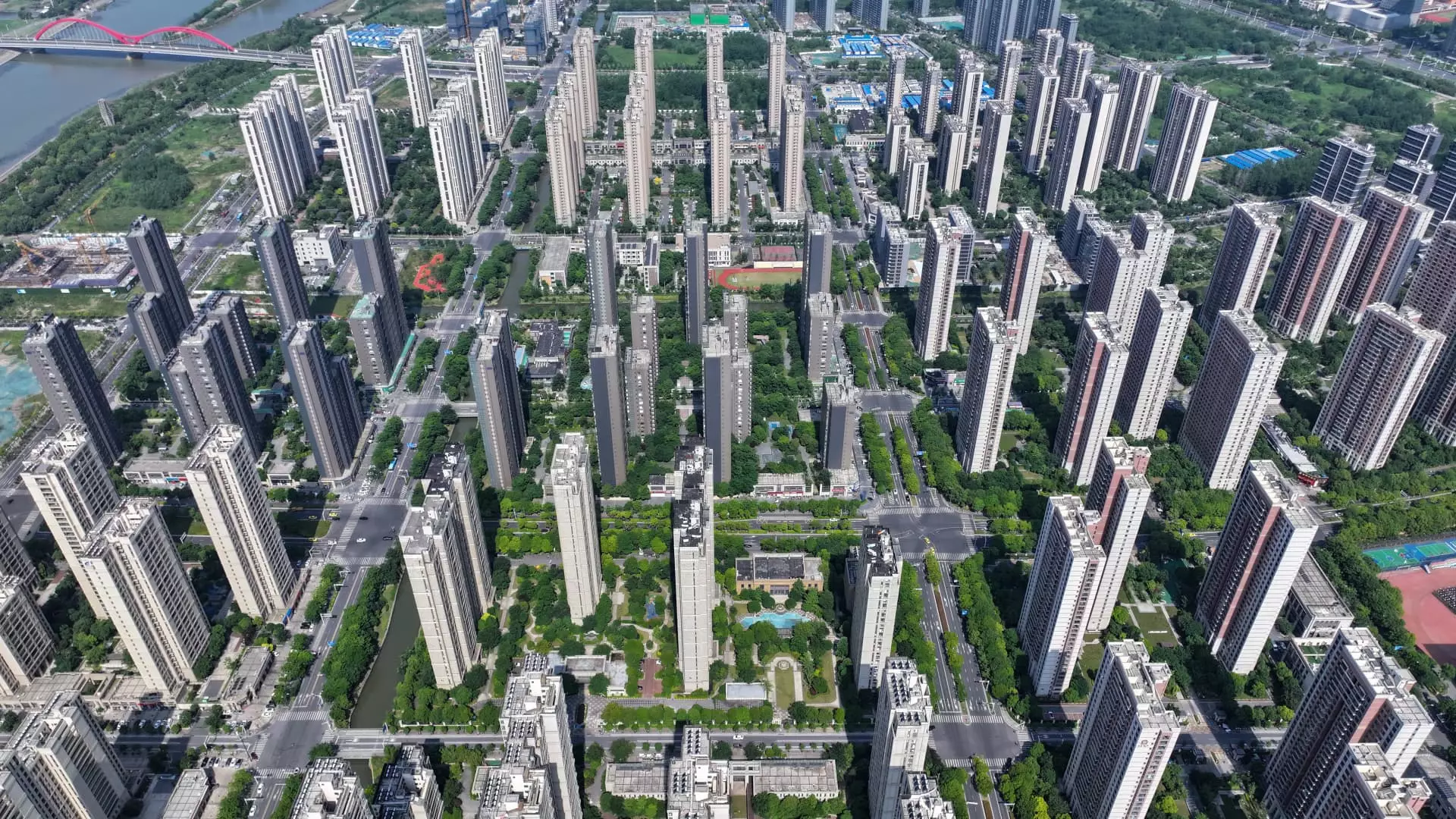Reviving the Chinese Property Market: A Double-Edged Sword

Recent trading sessions have shed a glimmer of hope on the beleaguered Chinese property sector, with shares of numerous Hong Kong-listed property developers reaching their highest points in over a year. The Hang Seng Index emphasized this surge, primarily driven by the Longfor Group, which saw an astonishing increase of more than 25%. Other notable players in the real estate domain such as Shimao Group and Kaisa Group reported even more dramatic gains, with Shimao’s stock skyrocketing by over 87% and Kaisa’s climbing 40.48%. These figures not only mark significant milestones for these companies but also hint at a potential, albeit cautious, recovery for the entire sector.
The broader implications of these developments are intertwined with the ongoing easing measures implemented by various municipal governments in mainland China. As major cities like Guangzhou and Shanghai rolled out initiatives to stimulate homebuyer confidence, the market’s reaction has been palpable. Removing restrictions on home purchases and adjusting tax regulations are steps aimed at reigniting demand in a sector that has been grappling with prolonged challenges.
The Hang Seng Index and Market Responses
The broader market did not remain unaffected by this pronounced positive trend. The Hang Seng Index gained an impressive 6% during this period, with the Mainland Properties Index surging over 14%. This growth indicates a significant market rebound that many investors have been eagerly awaiting. However, one must note that the optimism surrounding these shifts is still coupled with the awareness of significant challenges that lie ahead. As noted by Morgan Stanley, while these recent initiatives will likely provide stability, they may not be sufficient to fully revitalize property prices and spur demand back to pre-crisis levels.
The Underlying Challenges Still Persist
Looking deep into the statistics reveals a chilling narrative as well. The real estate sector, which used to represent over 25% of China’s GDP, has seen its influence wane significantly since the government initiated a crackdown on excessive debt in 2020. Factors such as the ongoing fiscal pressures on households and excess inventory continue to plague the market, raising questions about the sustainability of the current rally. Even as major firms display gains, a lingering shortfall in demand suggests a fragile landscape.
China’s initiatives, though well-intentioned, have seen limited results thus far, leaving investors in a state of cautious optimism. There remains a solid demand for a more comprehensive strategy that balances immediate recovery with long-term stability, ensuring that the revival of property stocks does not merely reflect a temporary rebound but paves the way for sustainable growth moving forward.
While the resurgence of Chinese property stocks illustrates a turning tide in market sentiment, critical challenges persist beneath the surface. Policymakers must tread carefully to maintain momentum while addressing the fundamental issues that have long weighed down the sector. As the proverb warns, “fools rush in where angels fear to tread,” underscoring the need for a prudent approach in navigating the complexities of China’s real estate landscape. The journey to recovery is fraught with hurdles, and stakeholders must be prepared for potential setbacks in the pursuit of stability and growth.





